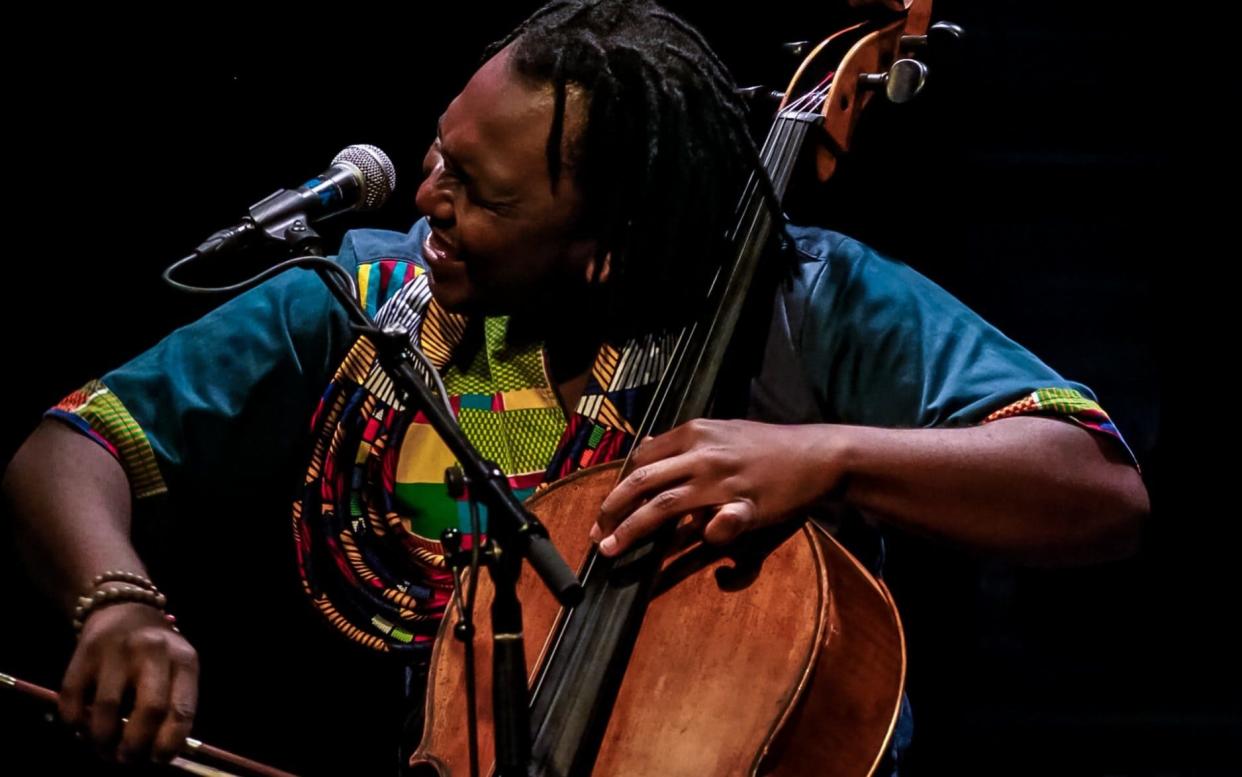Abel Selaocoe, Kings Place, review: Bach meets Bobby McFerrin

As Britain teeters on the edge of a second lockdown, audiences are grabbing at every chance to enjoy live music in case it’s snatched away again. On Saturday night, Kings Place in London offered two concerts at once. That might seem reckless but when audiences are necessarily small it’s easy to sell out. (Every cloud has a silver lining.)
The one that caught my eye was given by Abel Selaocoe, the young South African cellist who’s been making waves since he left the Royal Northern College of Music two years ago. Although times are tougher than perhaps they’ve ever been for performing musicians, I would bet money on Selaocoe not just surviving but thriving. For one thing, he’s tough; he somehow made it all the way from a poor home in South Africa to Manchester. For another, he has knock-out charm.
He welcomed us all warmly to the hall, and in a solo concert of just over an hour drew us into his musical world, which is intertwined with his personal story in a way few Western-born musicians would allow themselves. Selaocoe’s early life isn’t something he wants to shake off; it’s alive in him still, and he evoked it in a sequence of inventive and often moving self-composed pieces combining cello, electronics and his own singing voice.
But first Selaocoe demonstrated an impressive mastery of the cello from a conventional Western point of view, throwing off three movements from Bach’s C major solo suite with delightful springy lightness. Bach returned later when Selaocoe played one of his Sarabandes, first “straight” and then ornamented in the way he remembers his mother singing along to, when he practiced the piece at home as a teenager. As Selaocoe pointed out, his mother had been influenced by Christian hymn-singing, so the idiom of Bach’s music wasn’t completely unfamiliar to her, though — as his recreation of her singing made clear — she “Africanised” Bach too, making the melody more rhapsodic and ‘speaking’.
Selaocoe’s own music evoking the tough matriarchs and migrant workers of his family also showed a fascinating blend of Western and African elements, the latter recreated with sophisticated pedal-controlled sequencers and harmonisers. These allowed him to build rich layers of rhythmic mouth-clicks and vocal percussive sounds, performed with an astonishing panache which suggested he could have a successful parallel career as a vocalist in the Bobby McFerrin mould. Mixed in with these repeated patterns were plucked cello notes, adding an element of Western harmony to African rhythm. Over this rich backing Selaocoe would drape new melodies, sometimes vocal, sometimes played on the cello, sometimes both at once.
The mood was nostalgic and rhapsodic, though just occasionally a tone of dogged persistence appeared, which spoke of rural hardships endured. When solo instrumentalists “reinvent” an instrument using technology, the results often intrigue or astonish but they rarely move us. Selaocoe’s way of reinventing the cello went straight to the heart.
This concert is available to stream for a fee, for seven days at kingsplace.co.uk


